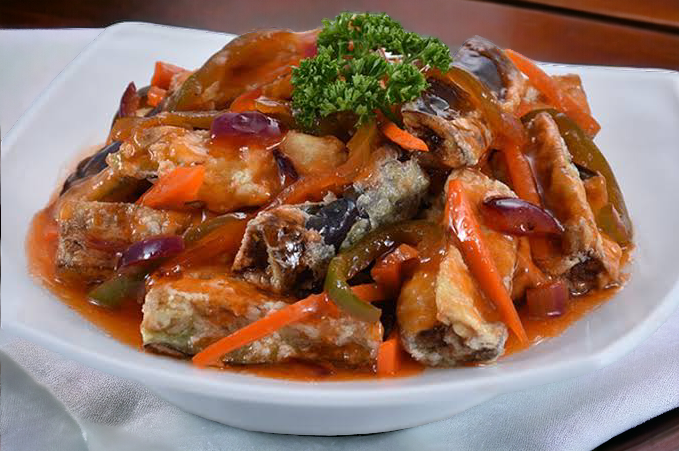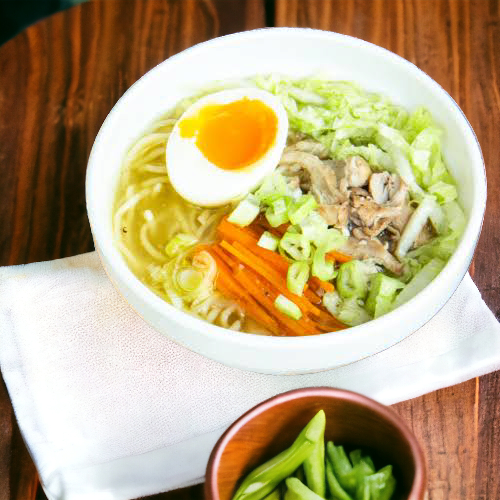Introduction
Cooking a perfect lechon belly is a culinary feat that requires patience, skill, and attention to detail. This beloved Filipino dish is known for its rich flavors, crispy skin, and melt-in-your-mouth tenderness. Whether you're a seasoned chef or a home cook looking to impress your guests, mastering the art of cooking lechon belly will undoubtedly elevate your culinary repertoire.
In this comprehensive guide, we will delve into the intricacies of preparing and cooking lechon belly, from selecting the finest pork belly to crafting the perfect marinade and achieving that coveted crispy skin. With the right techniques and a touch of finesse, you'll be well on your way to creating a lechon belly masterpiece that will leave your family and friends craving for more.
Selecting the Perfect Cut of Pork Belly
Before embarking on your lechon belly journey, it's crucial to start with the best-quality pork belly. Opt for a piece that is well-marbled with a good balance of lean meat and fat. Aim for a 1.5 kg pork belly, ensuring that it is fresh and free from any off-putting odors.
When selecting the pork belly, look for an even thickness throughout the cut to ensure uniform cooking. A uniform thickness is key to achieving a perfectly cooked lechon belly with a tender, juicy interior and crispy, golden-brown skin.
Preparing the Marinade
The key to an exceptional lechon belly lies in the marinade. A well-balanced combination of flavors is essential for infusing the pork belly with irresistible taste. To create the perfect marinade, combine the following ingredients:
- 0.5 tsp ground pepper
- 1 pc onion, finely chopped
- 2 heads garlic, minced
- 4 stalks scallion, chopped
- 2 stalks lemongrass, finely chopped
- 0.25 cup oyster sauce
- 2 tbsp spiced vinegar
- 0.5 cup spiced vinegar
- 3 tbsp soy sauce
- 3 cloves garlic, minced
- 2 pcs onion, finely chopped
- 1 pc hot chili pepper, chopped
- 0.5 tsp ground pepper
- 2 tbsp brown sugar
Combine all the ingredients in a bowl, ensuring that the flavors are well incorporated. The aromatic blend of garlic, onion, scallion, and lemongrass will infuse the pork belly with a tantalizing aroma, while the oyster sauce, soy sauce, and vinegar will impart a depth of flavor and tenderness to the meat. Adjust the seasonings to suit your personal taste, and don't be afraid to experiment with the ratios to create a marinade that truly captivates your palate.
Preparing the Pork Belly
Once you've crafted the perfect marinade, it's time to prepare the pork belly. Start by scoring the skin of the pork belly in a crisscross pattern, being careful not to cut too deeply into the meat. This will help the skin crisp up during the cooking process, creating that irresistible crackling texture that defines a spectacular lechon belly.
Next, generously rub the marinade all over the pork belly, ensuring that it penetrates into the scores on the skin as well as the meat itself. For best results, allow the pork belly to marinate in the refrigerator for at least 12 hours, or preferably overnight, to allow the flavors to fully permeate the meat, resulting in an incredibly flavorful and succulent dish.
Mastering the Roasting Process
Roasting the marinated pork belly to perfection is a critical step in achieving that signature crispy skin and tender meat. Preheat your oven to 180°C (355°F) and place the marinated pork belly on a wire rack in a roasting pan to allow the heat to circulate evenly around the meat.
As the pork belly roasts, periodically baste it with the remaining marinade to ensure that it remains moist and flavorful throughout the cooking process. Keep a close eye on the pork belly as it cooks, and use a meat thermometer to monitor the internal temperature, aiming for 65-70°C (150-160°F) for a perfect balance of tenderness and succulence.
Achieving Crispy Perfection
To elevate your lechon belly to new heights, the final step is achieving the irresistible crispy skin that defines this iconic dish. Increase the oven temperature to 230°C (450°F) or turn on the broiler function during the last 20-30 minutes of cooking to attain that coveted golden-brown, crackling skin.
As the pork belly nears completion, pay close attention to prevent the skin from burning. Rotate the pork belly if necessary to ensure even crisping, and continue basting with the pan juices to infuse the skin with rich, caramelized flavor. Once the skin reaches a crispy, golden-brown perfection, remove the lechon belly from the oven and allow it to rest for a few minutes before carving.
Slicing and Serving the Lechon Belly
Slicing the lechon belly is an art form in itself. Use a sharp knife to carve the pork belly into thin, succulent slices, ensuring that each portion contains a delectable combination of crispy skin and tender meat. The contrast in textures is what makes lechon belly such a sought-after delicacy, so take your time to carve the meat with precision and finesse.
Serve the lechon belly on a platter garnished with fresh herbs, such as cilantro or parsley, and accompany it with a traditional spiced vinegar dipping sauce for a burst of tangy, savory flavor. Whether you're serving it as the centerpiece of a festive celebration or as a mouthwatering weeknight dinner, your perfectly cooked lechon belly is sure to impress the most discerning palates.
Tips for Flavor Variations
While the traditional lechon belly recipe is a time-tested classic, don't be afraid to experiment with flavor variations to suit your personal preferences. Consider incorporating aromatic spices such as star anise, cinnamon, or cloves into the marinade for a warm, exotic twist. You can also infuse the pork belly with citrus notes by adding fresh calamansi or lime juice to the marinade for a refreshing burst of acidity.
For those who enjoy a touch of heat, finely mince extra hot chili peppers and incorporate them into the marinade to impart a fiery kick to the lechon belly. The beauty of cooking is that it allows for endless creativity, so feel free to explore different flavor profiles and ingredients to create a lechon belly that reflects your unique culinary vision.
Storing Leftover Lechon Belly
If, by some miracle, you find yourself with leftover lechon belly, fear not—this delectable dish can be easily stored for future enjoyment. To preserve the succulence and crispiness of the lechon belly, transfer any remaining portions to an airtight container and refrigerate promptly. When reheating, place the slices on a baking sheet and warm them in a preheated oven until the skin becomes irresistibly crispy once again.
Additionally, leftover lechon belly can be repurposed into a myriad of mouthwatering dishes, from flavorful stir-fries to indulgent sandwiches and hearty soups. Embrace your culinary creativity and transform your leftover lechon belly into an array of delectable meals that will delight your taste buds time and time again.
Sharing the Lechon Belly Experience
Cooking lechon belly is not merely a culinary endeavor; it's an opportunity to bring people together and create lasting memories. Whether you're preparing this iconic dish for a special occasion, a family gathering, or simply as a labor of love, the act of serving lechon belly embodies the warmth and hospitality of Filipino cuisine. Share the joy of savoring this beloved delicacy with your loved ones, and revel in the delight it brings to all who partake in the experience.
Embracing the Art of Cooking Lechon Belly
In conclusion, mastering the art of cooking lechon belly is a rewarding journey that allows you to hone your skills as a culinary artisan. From the careful selection of pork belly to the meticulous preparation of the marinade and the precise execution of the roasting process, each step in creating lechon belly is an opportunity to showcase your expertise and passion for cooking.
By applying the expert tips and techniques outlined in this comprehensive guide, you can elevate your lechon belly game and impress even the most discerning food enthusiasts. Embrace the art of cooking lechon belly with confidence and enthusiasm, and savor the satisfaction of creating a dish that captivates the senses and brings people together in celebration of exceptional food and shared experiences.
In closing, the journey to mastering the art of cooking lechon belly is an enriching pursuit that allows you to delve into the rich tapestry of Filipino cuisine and create culinary masterpieces that captivate the palate and nourish the soul. So gather your ingredients, don your culinary apron, and embark on a gastronomic adventure that will surely leave a lasting impression on all who have the privilege of savoring your delectable lechon belly creation.
Learn the expert tips and techniques for preparing a mouthwatering lechon belly. From selecting the perfect cut of pork belly to mastering the marinade, this comprehensive guide will take your lechon belly game to a whole new level.















